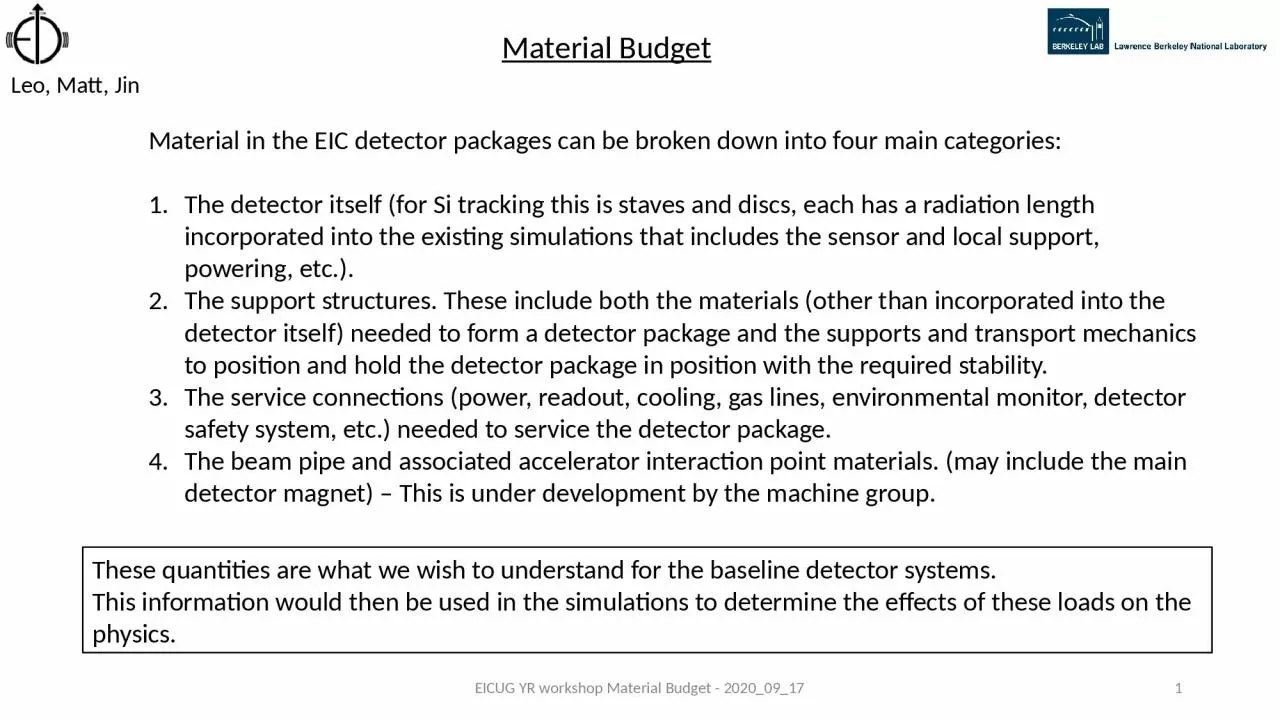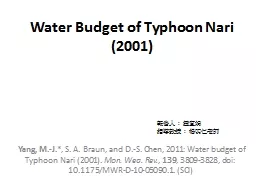PPT-Material Budget Material in
Author : brianna | Published Date : 2023-10-27
the EIC detector packages can be broken down into four main categories The detector itself for Si tracking this is staves and discs each has a radiation length
Presentation Embed Code
Download Presentation
Download Presentation The PPT/PDF document "Material Budget Material in" is the property of its rightful owner. Permission is granted to download and print the materials on this website for personal, non-commercial use only, and to display it on your personal computer provided you do not modify the materials and that you retain all copyright notices contained in the materials. By downloading content from our website, you accept the terms of this agreement.
Material Budget Material in: Transcript
Download Rules Of Document
"Material Budget Material in"The content belongs to its owner. You may download and print it for personal use, without modification, and keep all copyright notices. By downloading, you agree to these terms.
Related Documents














